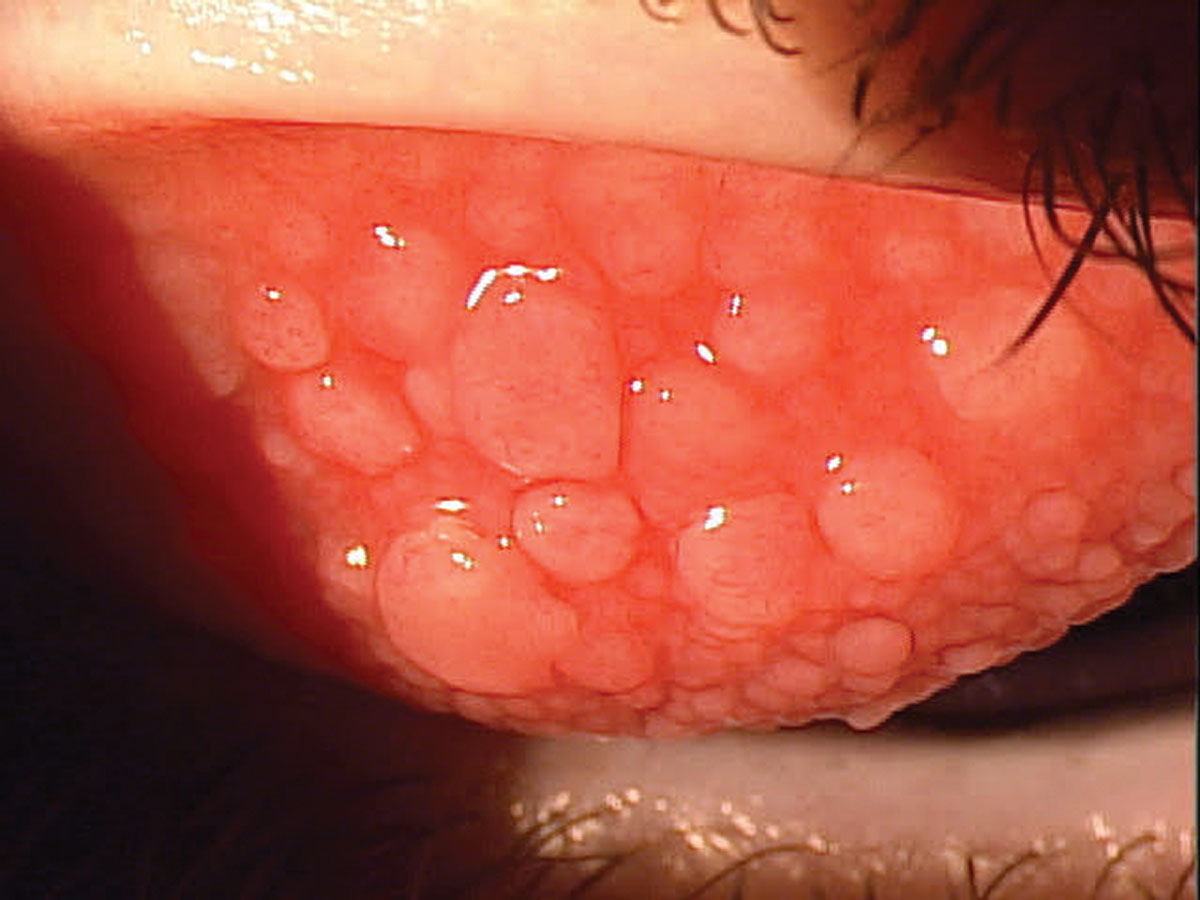 |
From 2008-2009 to 2018-2019, the prevalence of POSID among people of Asian descent rose from 6.26 to 11.80 cases per 10,000 people, largely due to an increase in cases of vernal keratoconjunctivitis. Photo: Paul M. Karpecki, OD. Click image to enlarge. |
The three most common pediatric ocular surface inflammatory diseases (POSID) are blepharokeratoconjunctivitis (BKC), herpetic simplex keratoconjunctivitis (HSK) and vernal keratoconjunctivitis (VKC), all of which require prompt treatment to prevent abnormal vision development. Limited research has been done to quantify the prevalence of POSID across the United States, though identifying high-risk groups can help improve screening and public health initiatives. With this goal in mind, a team of investigators recently studied the epidemiology of BKC, HSK and VKC over 14 years. Their findings, published in Ophthalmology the other day, revealed distinct distributions in terms of gender, race, ethnicity and geography.
Using data from Optum Labs Data Warehouse, the researchers identified a total of 2,168 patients with a medical claim for a diagnosis of POSID between 2007 and 2020. Those with less than six months of follow-up were excluded.
The estimated prevalence of POSID in 2018-2019 was 3.32 cases per 10,000 people. The researchers reported that the prevalence of POSID was higher among children belonging to the following demographic groups: ages five to 10 years, males, people of Asian descent and those living in the Northeast and the West census regions of the US. POSID was found to be least prevalent among children younger than five.
The data showed a significant decrease in the prevalence of POSID among children aged 10 to 18 from 2008-2009 to 2018-2019. For 10- to 14-year-olds, the prevalence decreased from 5.53 to 4.08, and among 15- to 18-year-olds, it went from 6.11 down to 3.10.
During 2018-2019, the prevalence (per 10,000) of BKC, HSK, and VKC were 0.59, 0.74 and 1.99, respectively. The researchers pointed out in their paper that “there were significant differences in terms of age, gender, racial and ethnic and regional distributions among the diagnoses.” In particular, among people of Asian descent, the prevalence of POSID rose from 6.26 to 11.80 from 2008-2009 to 2018-2019, which researchers note was driven by a marked increase in VKC cases over the last decade.
The researchers propose several theories to explain the increasing prevalence of VKC among people of Asian descent. “While genetic predisposition may play a role, other factors such as environmental and lifestyle changes accompanied by economic development and urbanization are now acknowledged to be major factors in the recent increase in the prevalence of allergic diseases,” they explained in their paper. “In the United States, the Asian population is highly urbanized and is concentrated in the West region and New York metropolitan area.”
Asian descent was also found to be associated with POSID development in the multivariate analysis, with an odds ratio (OR) of 3.12. Other demographic factors associated with POSID development included age groups >five years (ORs: 2.57 to 3.75), male gender (OR: 1.38) and Black or African American descent (OR: 1.26).
In summary, the researchers concluded, “POSID are a common group of diseases in the US predominantly affecting children of ages between five and 15 years old, with VKC more frequently diagnosed than BKC and HSK. The three subtypes of POSID showed distinct distributions in terms of gender, race and ethnicity, and geography, with Asian children suffering from VKC becoming significantly more common over the last decade.”
This review of modern POSID epidemiology may help eyecare providers “differentiate children presenting with POSID and facilitate appropriate management in a timely fashion, thereby preventing childhood vision loss.”
Fung SSM, Boghosian T, Perez C, et al. Epidemiology of pediatric ocular surface inflammatory diseases in the United States using the Optum Labs Data Warehouse. Ophthalmology. December 10, 2023. [Epub ahead of print]. |

